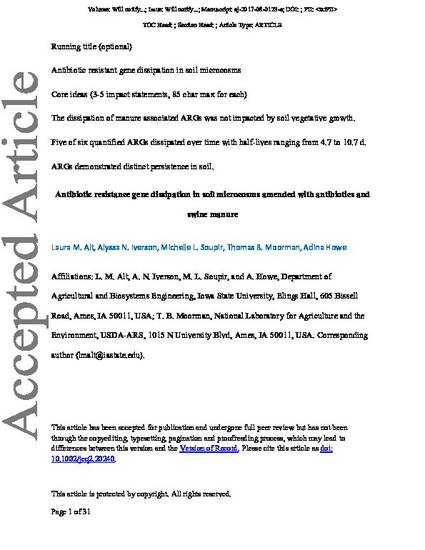
The use of antibiotics in animal agriculture has exacerbated the presence of both antibiotic resistance genes (ARGs) and residual antibiotics excreted in animal manure. Field application of this manure is a common practice as its nutrient rich material can benefit crop growth. However, this practice can also introduce antibiotics and ARGs into non-agricultural settings. The integration of prairie buffer strips within and at the edge of crop fields is a potential management solution to reduce concentrations of ARGs commonly transported via water runoff and infiltration. To investigate the fate of ARGs in directly manured crop field soils and surrounding, impacted prairie strip soils, an incubation experiment was conducted. Row crop and prairie strip soils sampled from three sites received either an antibiotic spike and swine manure addition or a control water addition. The concentrations of select ARGs were then monitored over a 72-day period. Although soil-vegetation type and site location were not observed to influence ARG dissipation, the select genes did display different half-lives from one another. For example, tetM demonstrated the fastest dissipation of the genes quantified (average half-life = 5.18 days). Conversely, sul1 did not conform to the first-order linear regression kinetics used to describe the other investigated genes and was highly abundant in control prairie strip soils. The quantified half-lives of these select ARGs are comparable to previous studies and can inform monitoring and mitigative efforts aimed at reducing the spread of ARGs in the environment.
Available at: http://works.bepress.com/michelle_soupir/94/

This is the peer-reviewed version of the following article: Alt, Laura M., Alyssa N. Iverson, Michelle L. Soupir, Thomas B. Moorman, and Adina Howe. "Antibiotic resistance gene dissipation in soil microcosms amended with antibiotics and swine manure." Journal of Environmental Quality (2021), which has been published in final form at DOI: 10.1002/jeq2.20240.